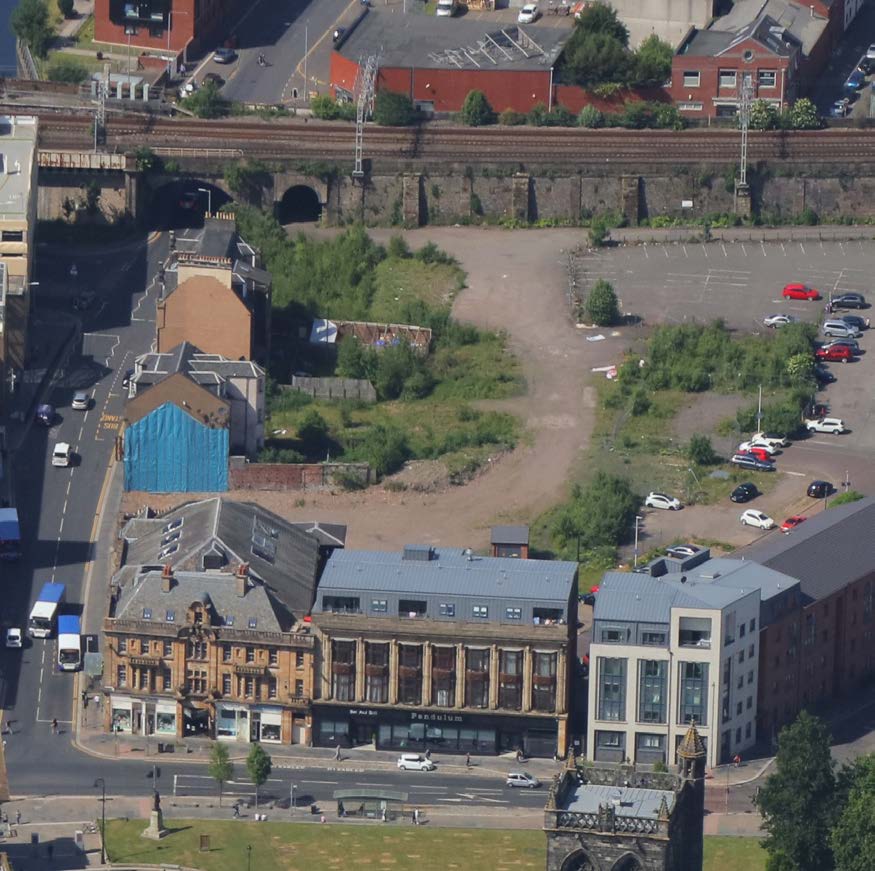Housing to 2040 voices: the resident’s experience | Paisley

As part of our work on Housing to 2040, we spoke to five people involved in recent affordable housing projects in Paisley and Dunbeg. Ian Patrick is a Paisley resident and trustee at Methodist Central Hall. Here he talks about the delivery of affordable housing, town centre challenges, and potential for the high street.
I am Paisley born and bred and have been a member of the Methodist Church here all my life. I have been involved in various aspects of church life on and off for the last 50 years, and have done more or less all the jobs in the church apart from being a preacher! At the moment I am one of the trustees.
Ours is the last Central Hall in use in Scotland. It is a place of worship on a Sunday but every other day of the week it is available for the community to use. Various clubs and groups meet here including a youth group, photographic society, and mental health groups. The building also hosts a large number of events, including musical performances in the 500-seat auditorium. So, it is used almost as a community centre.
Town centre challenges
After the Arnott’s department store next door to our hall closed in 2003, the place quickly became rundown. For many years after, this part of town was very neglected and in need of a lot of money and attention.
Over the last few years, the council has put plenty of effort into improving the town centre, running a number of events to bring people into the town. That seems to be working, and more of that would certainly be good.
The new housing developments are great news for the town. The appearance of the area has vastly improved since the development of flats started around the corner [in the historic Arnott’s building on Gauze Street]. A new restaurant has also opened there. It is very popular and has brought much more life and footfall to this part of town. Things are certainly better now than they were for a number of years after Arnott’s closed.
I am looking forward to this latest set of flats in phase three being finished. Having more people living here should bring further improvements to the area. There is still talk of developing the remaining vacant land behind the new flats: I think it would be a good move.
Potential for the high street
The latest phase of the development on the Arnott’s site has not been without challenges for the church, though. Our hall and the Arnott’s building were butted together and there was an ongoing technical problem that led to a dispute. But suffice to say the development has been positive for the area.
Now the Council needs to get its head around what to do about the high street: there are so many vacant shops and it needs a rethink. Like many towns, I think Paisley is suffering due to out-of-town shopping. I know some people believe that high-street shopping will revive, but I have my doubts about that.
On the upside, more and more people are coming into Paisley town centre for meals in the evenings. A whole lot of new restaurants have opened up in Paisley, not far from where the development is at the moment, including the new one on Gauze Street. They all seem to be doing well.
My personal thoughts are that we need more new housing accommodation in the high street rather than shops. That will bring more life to the town centre. I feel the approach taken with these new developments of flats, to have more people living in the centre of town, is the right one.
Header image credit: Cooper Cromar, Do Architecture, Renfrewshire Council, Park Lane Developments (image credits from Housing to 2040 Paisley workshop report)
Housing to 2040
In 2019, the Scottish Government looked at what Scotland’s homes and communities should look and feel like in 2040, and the options and choices to get there. We supported the Housing to 2040 consultation with a series of workshops, interviews and a travelling exhibition.
